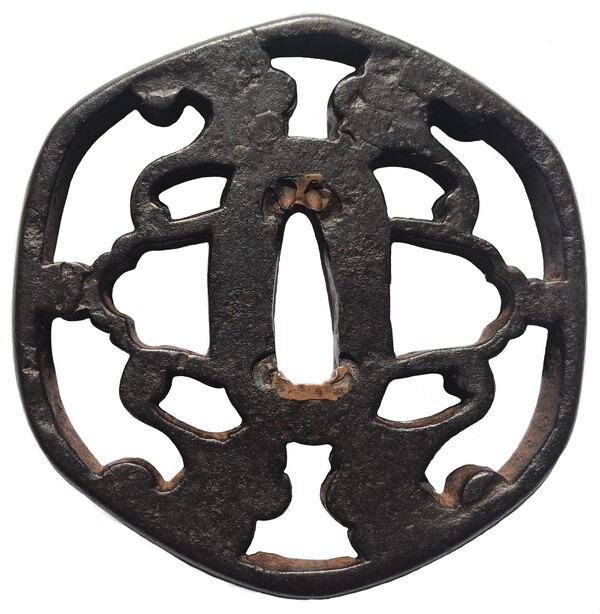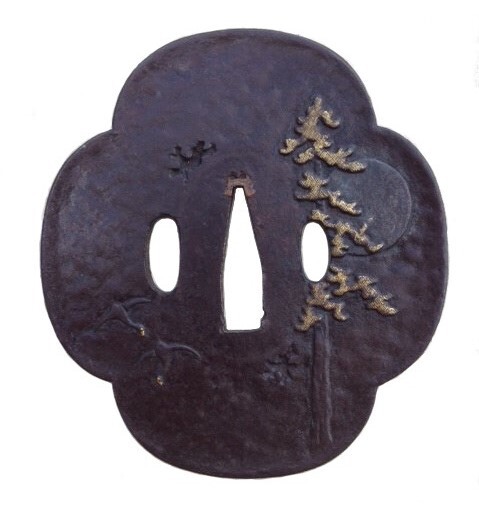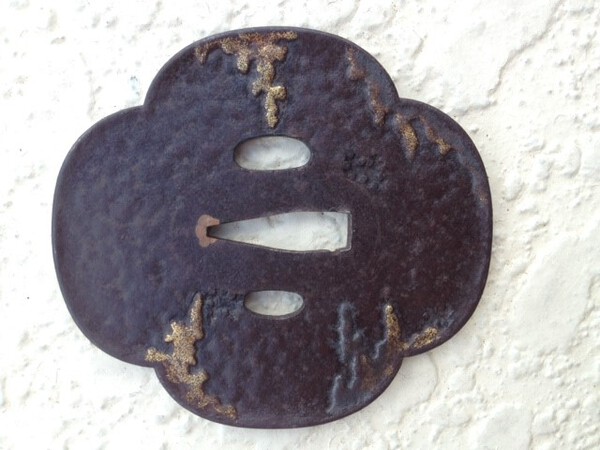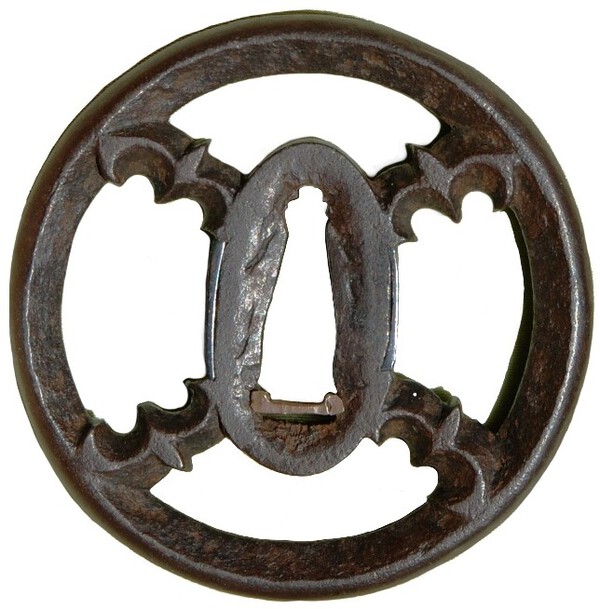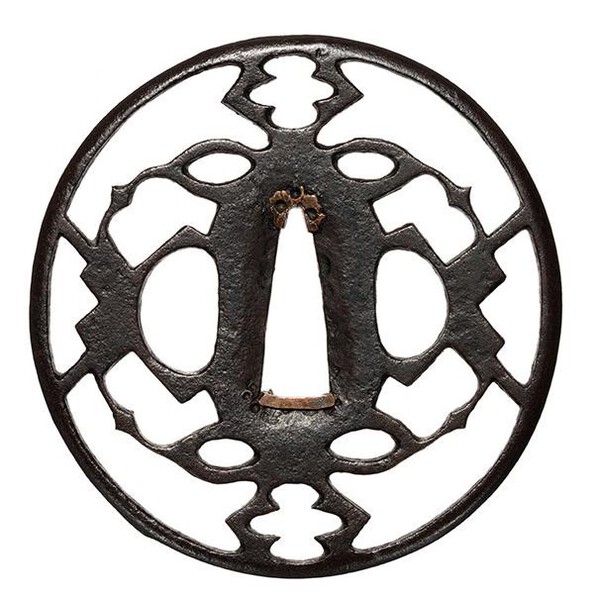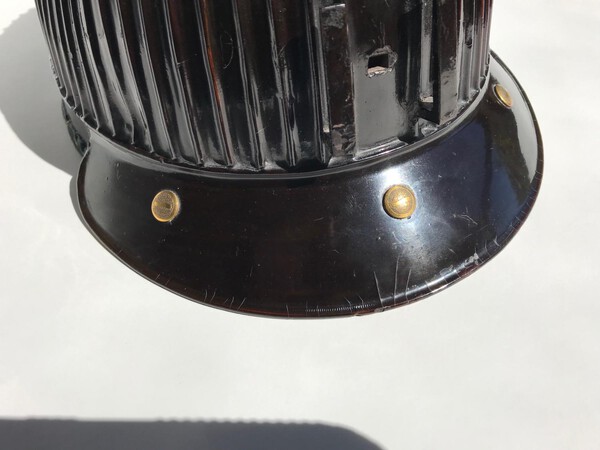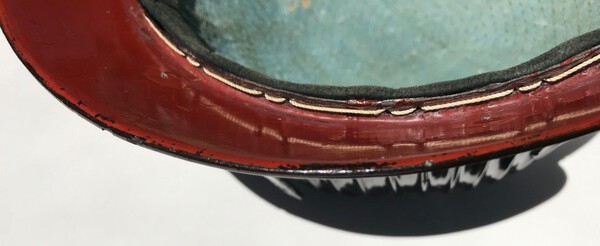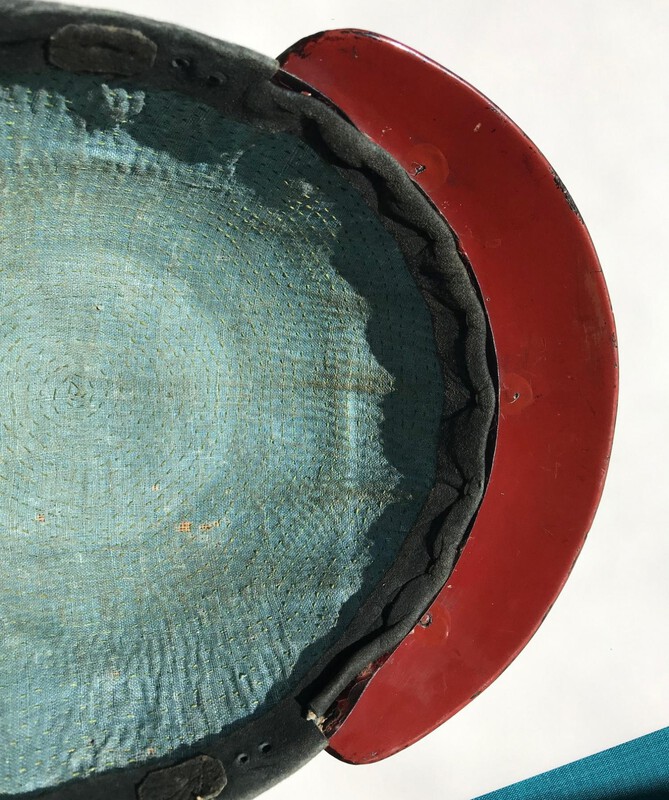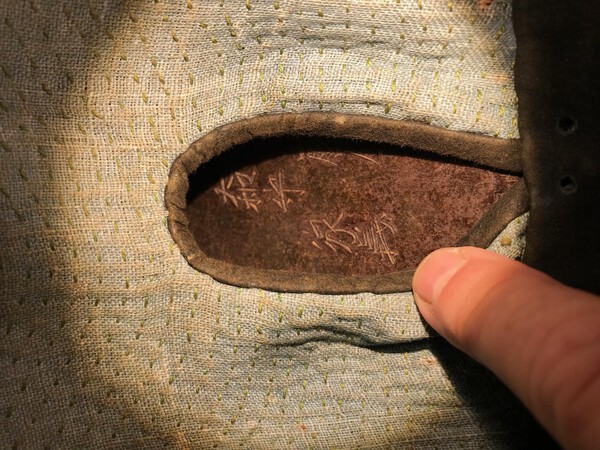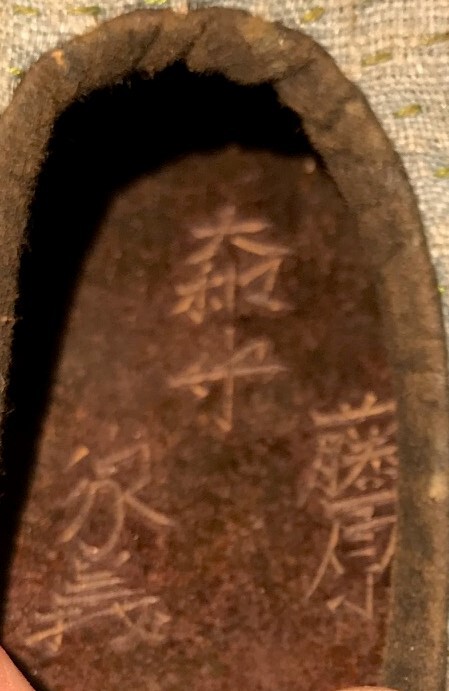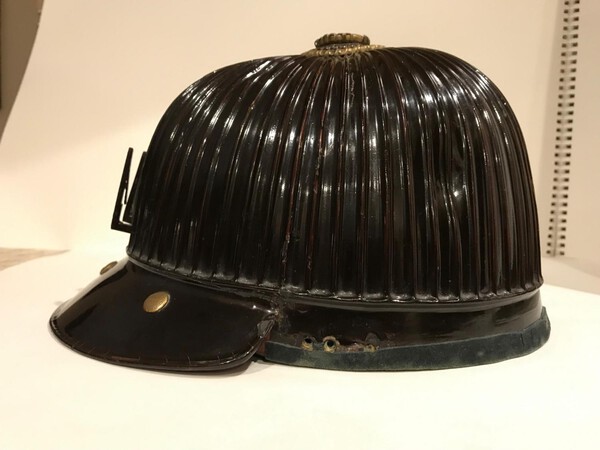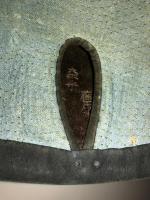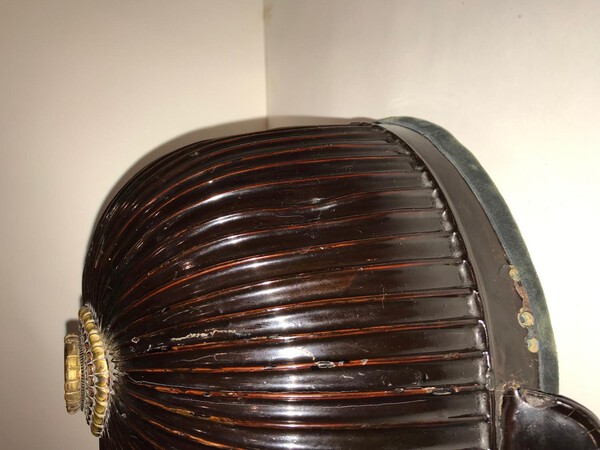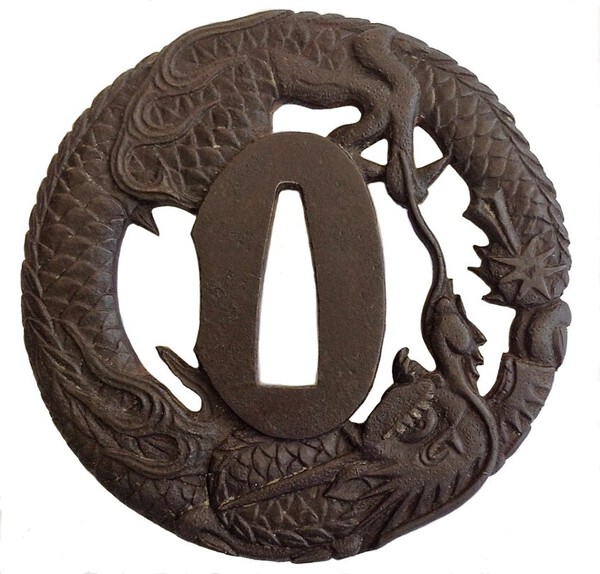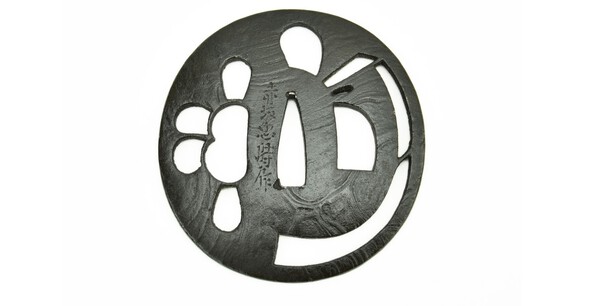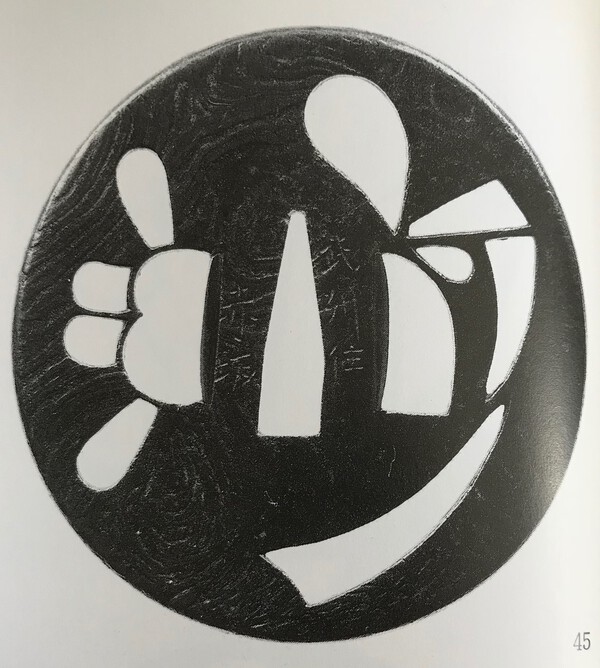-
Posts
300 -
Joined
-
Last visited
Everything posted by Japan2112
-
Here is one that I like of a wabi sabi aesthetic. Organic, asymmetric, rough tsuchime ji... Old Owari.
-
Hey Florian, Or a single butterfly's reflection on water. See, this is an unusual sukashi that challenges description. I have heard, among others, reflection of the moon, prayer ribbon, and tokyo (temple roof supporting bracket), which it does look like but the circles. Thanks for helping me out.Can't say as I've seen another quite like it, Mark
-
Hello all, I have had this one for a few years. Great size, iron and applied dote mimi.... but have not come up with an interpretation of the sukashi that I am satisfied with, Any ideas? I also wonder if the hitsu ana is original, Thanks, in advance for opinions,
-

Irises at Yatsuhashi (Eight Bridges) - Higo Iron Tsuba
Japan2112 replied to Vermithrax16's topic in Tosogu
I really like Jose's drawings. You don't often see that, and the idea of sketching our tsuba is exactly what Brian points out as the meaning of the yatsuhashi construction. I am going to give that a try tonight, The Yatsuhashi theme in just 3 or 4 planks is often an Akasaka interpretation, -
Very nice carving on that one. HAPPY BIRTHDAY!
-
Here is what I think is a more typical Toryusai school tsuba - larger than their typically smaller size and mokko shape, but school iron, nunome zogan, small hitsu and no seppa dai. I had bought it as Tanaka, papered as such, then sold it. .
-
We are all familiar with the Shihou Karigane - "Wild Geese in Four Directions". We see it on Owari and early Akasaka tsuba. Is there also a name (and meaning) given to the variant seen in Akasaka of three geese flying Counter Clockwise and one Clockwise? I see this once in a while and wonder about it. I'll give two image examples - this variant, and the more familiar Shihou Karigane. Thank you, Mark
-
- 1
-

-
I like the tsuba, it looks late, but of the Toryusai it didn't start until late 19th century anyways. A good source for the school is Tosogu Classroom Vol. 2 author Fukushi Shigeo translator Markus Sesko. Of the "Tanaka" tsuba I've seen in hand they seem to have a distinctive warm brown hammered iron and lack a seppa dai. Nunome zogan (inlay) and ko sukashi were also kantei points to the school. But, many styles and finishes were produced even back to Kiyotoshi....
-
Lovely menuki, Yanagawa work is a favorite of mine. Congratulations on those,
-
Hello all, I've got to say, that everyone's ideas and opinions have opened a door into what I may have acquired and has instilled upon me a great ,new appreciation of my helmet.. There was an extreme amount of information exchanged, and hopefully no one's feelings were trampled upon Thank you for taking such an interest, . Mark
-
Well, everyone I have learned quite a bit about this helmet and thank everybody very much for your comments. I will now look upon this new find with a more discerning eye and question even more. If I discover something new and relevant in my study I will let everyone know. Best Regards, Mark
-
Luc, As requested, here are some images of the mabizashi. I hope they're helpful. To all, Thank you for all your pointers concerning this helmet. I have learned a lot, somethings probably not found in books. Anyways, I have been pointed in the direction of Sasama Katchushi Meikan, a Jo I rated armorer. (not sure what that means). As I don't have any armor references being new to this study, what would be your thoughts about this katchushi? Mark
-
Ian et al, Firstly, thank you for all your close observation and comments. Being my first study piece the more information flowing my way helps. Regarding the re lacquer process. In "fingering" the indents from the inside they clearly feel like round ball strikes -50 caliber or so. There are a total of five indents, 4 beyond the tameshi - 3 on the left side and one on the right. It is my thought that the lacquerer may have wished to preserve the ball strikes as sword polishers sometimes do to preserve a battle scar on an old blade. That being the case, it would suggest a Momoyama age. Just my thinking, Mark
-
this is great discussion...much appreciated so far. I have attached a few more pics of the mei. Please note the nice condition of the iron plate and mei itself. Is this something that is left alone when being modernized? Thanks all again.
-
Hello all, I purchased my first ever helmet this week, and it is something of a mystery. It is an 8 plate adoka nari bashi that has been re lacquered over some time ago into a 62 plate suji bashi (fascimile), It has what seems like several musket ball dents in the underlying iron plate ( one square in front, maybe a "proof" firing) and four others on both sides and in the rear. The ukebari has a nicely lined opening to view the signature and to enter a flashlight and finger into to examine the inside. Not very rusty inside. The ball strikes are very impressive. I'd read where old helmets were sometimes refurbished during Edo period into more fashionable items and that the adoka nari was not popular in Edo times. This has a signature on the inside rear plate.It reads - "Yamato (no) Kami Fujiwara Iyeyoshi". I am hoping it is a Muromachi item that saw battle and was re purposed later in its life. Any guidance as to who was this smith or my next step into this hachi's research is greatly appreciated. I am sharing five images that I hope will be helpful. Thanks in advance for any and all comments. Mark
-
Are these "armorer's tsuba"?
-
Very very nice, Marco. The design is great, construction professional and, I would imagine that you will know the exact location of each fitting and guard.
-
Really nice, Richard.I thought the yakite shitate was all in the heating and mokume gitae added the chemical etch to enhance differences in iron, but it's nice to always learn more. I like the 2nd round of images, as it looks like a "harder" surface, but which set has the closest color? The darker is also very nice.
-
It is hard to tell from here whether it is cast or not, but my vote is for modern work, particularly with the coloring. See below for 3rd gen. Kinai, forged and carved,
-
Aha, the special cap he wears. Thanks, Stephen.
-
It is interesting that once you focus on a motif, you begin to see it more often. Thanks of the tip, Steve. Can you give an example of this as a reference to Shoki? BTW, here is an 8th generation (?) Akasaka also with mokume plate - looks rather like an utsushi of the 5th above.
-
Ah, yes. A good start. Thank you Curran and Steve.
-
Hello gents, I have seen a couple of these Akasaka tsuba in books, always in mokume plate. Any ideas on what the sukashi motif represents? I was thinking rabbit over waves, but....? The image shown is from the Chic Sukashi Akasaka book by Sano museum. Thanks Mark C.
-
I like the iron and the rim is really pleasing. It takes work to make that sukidashi mimi. The tsuba has an Edo Period feeling with some wabi sabi aesthetic. The price is right.
-
Good decision, The finish looks nice. Enjoy.


